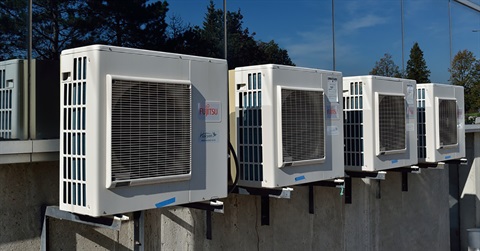Legionella Control - Cooling Towers & Warm Water Systems

What is Legionnaires' disease?
Legionnaires' disease is an illness caused by the inhalation of Legionella. Legionella is found in moist environments and becomes a problem when dispersed into the air as an aerosol. Water cooling systems used to cool the air in large buildings need to be monitored to control Legionella.
Regulatory changes to the management of water-cooling systems
The Public Health Regulation 2012 was amended on 10 August 2018 to outline major changes in relation to the Legionella control requirements and management of cooling water systems in NSW. NSW Health strengthened laws to require a performance based (or risk management) approach to managing all cooling water systems. The Regulation requires all cooling water systems to be managed according to Australian/New Zealand Standard (AS/NZS) 3666 Part 3 (2011 edition). This risk management approach requires the individual characteristics and unique risks of each cooling water system to be assessed and controlled to prevent Legionnaires' disease.
What does the new Regulation require?
The regulation was amended on 10 August 2018 to provide a performance-based, risk management approach to prevent Legionella bacteria in water cooling systems. As part of the risk management approach, building owners and occupiers must ensure the following requirements are complied with:
- Assessing risk of Legionella contamination and preparing a Risk Management Plan (RMP) – A competent person (defined in the Public Health Regulation 2022) must undertake a risk assessment of the cooling water system and document it in a risk management plan, at least every 5 years (more frequently if required, or for higher risk systems).
- Independent auditing of compliance with the RMP and Regulation – every year. A competent person prepares a certificate confirming the risk management plan has been completed, which must be submitted to Council within 7 days of completing the risk assessment.
- Providing certificates of RMP completion and audit completion to the local government authority - Compliance with the risk management plan and Public Health Regulation 2022 must be independently audited and documented in an audit certificate, which is to be submitted to Council every year.
- Sampling and testing for Legionella and heterotrophic colony count - Monthly sampling and testing of the system for Legionella and heterotrophic colony count must be undertaken.
- Notifying reportable laboratory test results to local government authority, immediately - High test results for Legionella (≥1000 cfu/mL) and heterotrophic colony count (≥5,000,000 cfu/mL) must be reported to Council within 24 hours of receiving the results.
- Displaying unique identification on all cooling towers.
Broken Hill City Council maintains a register of cooling towers and warm water systems within its area. Routine inspections, audits will include calling on RMPs for all registered cooling towers and warm water systems, by authorised officers to ensure systems are installed, serviced, operated and maintained in accordance with the requirements. The proper installation, maintenance, operation and cleaning of systems is a legal requirement under the Public Health Act 2010, Public Health Regulation 2022 and Australian Standard AS/NSZ 3666 – 2011 Air-handling and water systems of buildings – Microbial control.
Responsibilities of building owners and occupiers
Building owners or occupiers are responsible for ensuring that the cooling tower or warm water system within your building is installed, maintained and operated in accordance with the new requirements and associated RMP. All water-cooling systems can only be operated if they are equipped with a process designed to control microbial growth certified annually by a competent person and only if the process is in continuous operation.
Mandatory notification of cooling towers and warm-water systems
It is a legal requirement for all owners and/or occupiers of buildings who install and operate a cooling tower or warm-water system (regulated system) to notify Council. This also includes any changes to the system when any of the following occurs:
- a new system is installed on a premises
- there is a change of owner or occupier for a building on which a system is located
- the system is modified (for example, cooling towers added or removed)
- the contact details for the building manager changes and the system is decommissioned.